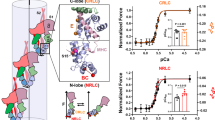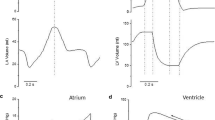Abstract
Cardiac contraction is triggered by the cyclic interaction of the "molecular motor" protein myosin with the actin filament, consuming ATP as the energy source to produce tension or shortening. The myosin heavy chain (MHC) contains the actin- and ATP-binding sites and represents the molecular motor of muscle contraction. This review describes the various subunits of human heart myosin in health and disease and discusses their functions. Two different MHC genes (α and β) with distinct biochemical features are expressed in the human heart. α-MHC confers a higher ATPase activity and higher shortening velocity to the heart than β-MHC. Motor function is regulated by myosin light chain (MLC) isoforms. Expression of the atrial MLC-1 isoform in the hypertrophied human ventricle increases cross-bridge cycling and contractility. It is suggested that MLC-1 acts as a MHC/actin tether. Weakening of this tether increases myosin function. MLC-2 slows the rate of tension development of myosin. This relative inhibition is relieved upon phosphorylation of the MLC-2 perhaps caused by "swing-out" of cross-bridges from the myosin filament. Mutations in all ventricular myosin subunits have been found in patients with hypertrophic cardiomyopathy.
Similar content being viewed by others
Author information
Authors and Affiliations
Additional information
Electronic Publication
Rights and permissions
About this article
Cite this article
Morano, I. Tuning the human heart molecular motors by myosin light chains. J Mol Med 77, 544–555 (1999). https://doi.org/10.1007/s001099900031
Received:
Accepted:
Published:
Issue Date:
DOI: https://doi.org/10.1007/s001099900031




